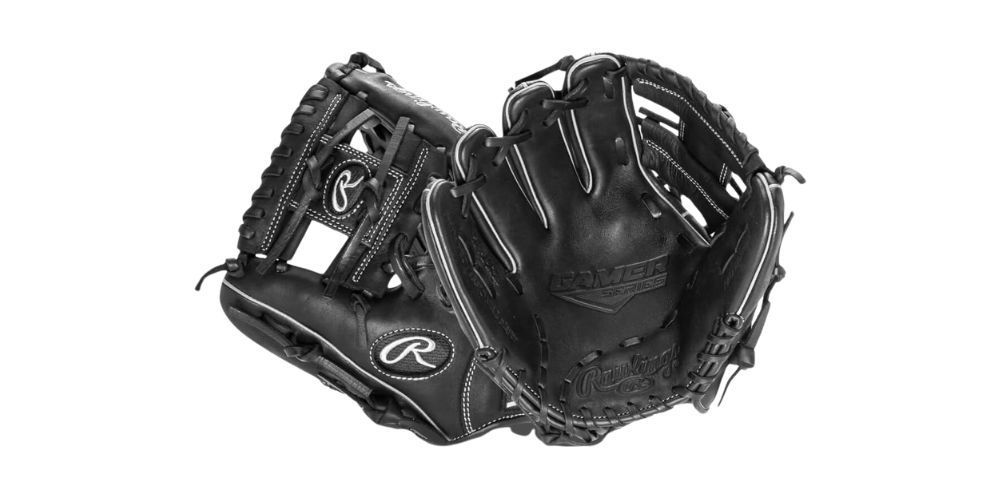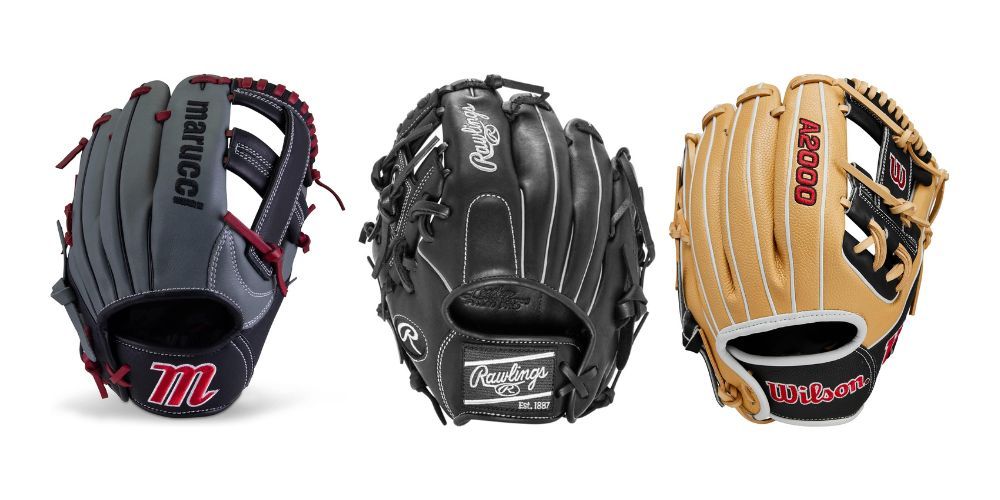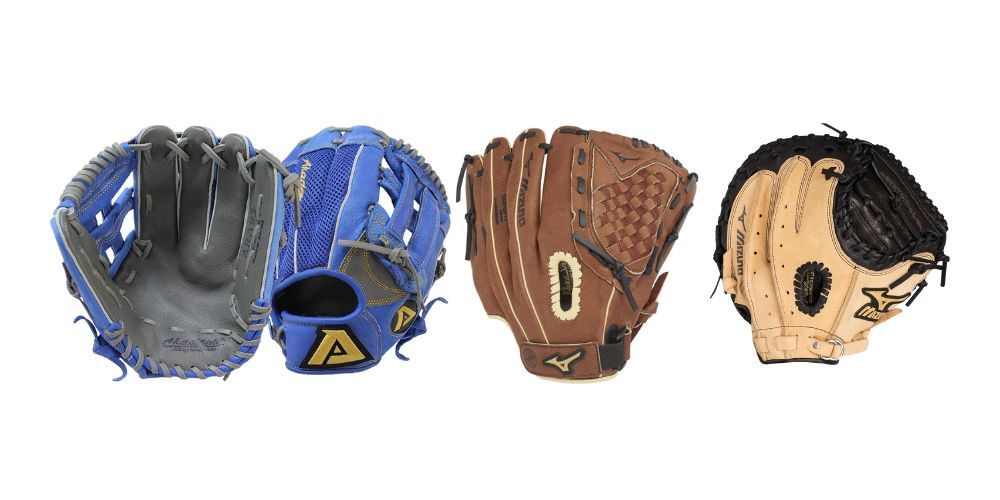The Best Fielding Gloves for Youth Baseball Players: Top Picks for 2024
September 28, 2024
Choosing the best fielding glove can mean the difference between a good catch and a missed opportunity in youth baseball. The right glove boosts performance and helps prevent injuries—a concern every parent understands well. But with so many options available, how do you pick the one that's just right for your young player?
To help make this choice easier, we've dug into countless reviews from parents, gathered insights from respected coaches, and took stock of trusted sports brands. In doing so, we discovered specific features that separate quality gloves from the rest. Interestingly, the type of glove varies depending on the player's position—something crucial but often overlooked.
Some of the best fielding gloves for youth baseball players in 2024 include the
Rawlings Gamer ContoUR 10.5" Youth Baseball Glove, designed for durability and ease of use, and the
Wilson A2000 SuperSkin DP15 11.5", which offers a snug fit and enhances feel while fielding. Other notable options include the
Marucci Caddo Series 11" glove for its lightweight construction and easy break-in process, making them ideal choices for young athletes starting their baseball journey.

Essential Features of Youth Baseball Gloves
One of the most critical aspects to consider when choosing a youth baseball glove is the quality of the material used. Leather is generally regarded as the gold standard due to its superior durability and comfort—vital for young players prone to wear and tear during play. On the other hand, synthetic materials are lighter and more affordable; however, they often cannot withstand the rigors of repeated use as well as leather can. Investing in a good-quality glove with excellent materials is key for young athletes looking to develop their skills safely.
Furthermore, an equally important aspect is understanding glove size.
Typically, gloves for youth players should fall within the range of 10 to 12 inches, depending on both age and position. Younger players aged 6 to 8 years will benefit from smaller gloves (around 10 inches), allowing for easier handling and control while learning fielding fundamentals. As players grow older or switch positions—like moving from infielder to outfielder—they may need larger gloves to aid in catching higher-flying balls. Choosing the correct size ensures better control and promotes confidence as they perform.
Another critical element worth noting is pocket depth, which plays a significant role in glove functionality.
The pocket depth directly correlates with a player's specific needs based on their defensive position. For instance, shallow pockets are ideal for infielders who require quick ball transfers during fast-paced gameplay—think rapid pulls at second base or catching pop-ups while maintaining agile footwork. In contrast, deep pockets serve outfielders best since they need secure catches for high-flying balls to avoid unnecessary drops. Understanding this nuance can significantly enhance a player’s performance, allowing them to feel more comfortable on the field.
By focusing on these essential features—material quality, appropriate sizing, and pocket depth—parents can make informed choices that empower young athletes as they embrace their beloved sport.
Top Fielding Gloves for Infielders
When it comes to infield play, agility, speed, and precision are paramount. The right glove can make all the difference in a player's ability to field grounders seamlessly and make quick throws. A glove designed specifically for infielders often features a shallower pocket, allowing for quicker ball transfer. This characteristic is crucial when facing fast-paced situations where every split second counts. Here are some top selections that support these needs.
Rawlings Gamer ContoUR 10.5" Youth Baseball Glove: Crafted specifically for young players aged 6-10, this model stands out with its shorter length which aids significantly in faster ball transfers. Its all-leather construction enhances durability while offering the comfort that young hands crave during lengthy games. Whether chasing down ground balls or making that decisive throw to first base, this glove provides the perfect balance of control and handling ease.
Moving on to a great option for slightly older players:
Wilson A2000 SuperSkin DP15 11.5" Baseball Glove: Ideal for players around age 10 and upward, this glove emphasizes an improved feel when fielding. Its advanced materials raise the bar for performance and durability. Players will appreciate how well it molds to their hand over time, ensuring it feels like a natural extension of themselves when making critical plays.
For players who may still be developing their skills or looking for something lightweight yet effective:
Marucci Caddo Series 11": Designed for youth players aged 7-10, this glove focuses on providing an easy break-in period and lightweight design, making it perfect for younger players just getting accustomed to the pace of the game. Less bulky than other models, they can focus more on refining their fielding technique without the distraction of heavier gear.
| Brand | Model | Age Group |
|---|---|---|
| Rawlings | Gamer ContoUR 10.5" | 6-10 |
| Wilson | A2000 SuperSkin DP15 11.5" | 10+ |
| Marucci | Caddo Series 11" | 7-10 |
While these gloves shine in performance and comfort, understanding how they fit into each player's style can lead to even greater success on the field. Next, we will explore superior options tailored specifically for outfield positions.

Best Outfield Gloves for Youth
Outfielders require gloves that strike a balance between size and maneuverability, enabling them to cover vast areas of the field while still being able to catch those high-flying balls. Therefore, a good outfield glove tends to be larger than those used by infielders and features deeper pockets. Having a glove that can snugly secure a ball is crucial for catching fly balls that come at varying heights and angles.
One excellent option is the Akadema Rookie Series 11" Youth Baseball Glove. This glove stands out thanks to its quality materials, making it suitable for young athletes who need a larger glove that remains manageable for their smaller hands. Its construction provides durability without sacrificing comfort, which is key as youth players often undergo rapid growth. Parents appreciate this feature because it means less frequent replacements as their child progresses in skill and size.
Another fantastic choice for budding outfielders is the Mizuno Prospect PowerClose 11.50" Youth Baseball Glove. Its lightweight design allows for quick handling during play, which is essential when every second counts in the outfield. With its deeper pocket, this glove does an exceptional job of securing catches, minimizing the risk of dropping the ball upon impact. “My eight-year-old loves how easy it is to catch and control the ball with this glove,” shares a satisfied parent—an endorsement that highlights how well this glove meets a young player’s needs.
Selecting an appropriate outfield glove not only enhances performance but also contributes to a child's overall enjoyment of the game. As we continue, let's explore equipment specifically designed for players who are behind the plate.
Ideal Catcher's Mitts for Young Players
Catcher’s mitts demand specific features designed to absorb the shock of blazing fastballs, as the role uniquely exposes a player to high-impact collisions with both the ball and the batter. When selecting a mitt for your young catcher, consider not just the padding but also how well it fits their developing hand size—too loose or too tight can hinder performance. Furthermore, a design that promotes proper grip is essential; it aids in clean transfers when throwing to bases, which is key for preventing stolen bases during games.
Important Features
An effective catcher's mitt should provide adequate cushioning to protect young hands from the impact of hard pitches yet remain flexible enough for quick movements. Look for mitts adorned with extra layers of padding at vital impact points, specifically where the ball makes contact. Adjustable wrist straps not only enhance fit but also ensure that the mitt remains securely in place during play. However, don’t overlook one critical aspect: a quick break-in period. A glove that takes weeks or months to soften can leave your player feeling frustrated and unprepared.
Popular choices among parents and coaches often highlight durability and comfort combined with solid protection. One standout recommendation is:
Mizuno Prospect GXC105 Youth Catcher's Mitt.
This model is well-loved among youth players because it provides excellent padding without sacrificing flexibility, which is crucial for agile motions behind the plate. The power lock wrist strap ensures a snug fit that can accommodate growth while preventing slippage in action. It’s an ideal choice for young catchers who need equipment that supports their skills while allowing room to develop further.
As you navigate through various mitt options, keeping these essential features in mind will greatly benefit your young catcher's performance on the field.

Tips for Choosing the Right Glove
Selecting the perfect glove doesn't have to feel like searching for a needle in a haystack. By focusing on a few key factors, you can streamline the process significantly and enhance your young player's experience on the diamond.
One of the first things to consider is their primary position on the field. Whether they're an infielder, outfielder, or pitcher will dictate not only the style but also the size of glove they need. For instance, shortstops and second basemen generally require smaller gloves for quicker transfers, while outfielders benefit from larger gloves designed to snag fly balls.
Comfort is next in line; a snug fit can make all the difference while providing security and stability during play. The glove should match the child’s hand closely without being overly tight, allowing flexibility while effectively catching and throwing. You may want to have your child try on several options before deciding; this experiential learning helps them form a connection to their equipment.
An important factor that often gets overlooked is the material of the glove. Leather gloves tend to be more durable and provide better performance over time but often come with a higher price tag. Conversely, synthetic gloves are lighter and may be more affordable, making them a good choice for younger players who might still be growing or changing positions frequently. The choice between leather and synthetic ultimately comes down to budget and personal preference.
Another vital aspect to consider is break-in time—this means how long it takes for the glove to become game-ready after you first get it. Some leather gloves require extensive breaking in, which can be anywhere from a few hours of use to several weeks. Alternatively, many synthetic gloves are designed to be more or less ready right out of the box. It’s helpful to discuss this with your child so they understand that some patience may be required if they opt for a leather glove.
Finally, take note of what many parents have found: involving your child in this selection process not only empowers them but often leads to better choices in gear. When they feel part of the decision-making, they’re more likely to take pride in their glove and enjoy using it throughout the season.
By remembering these factors—position specificity, fit, material preference, and break-in requirements—you'll be well-equipped to guide your youth player toward selecting a glove that will serve them well as they grow and develop their skills on the field.
Our Evaluation Criteria
When it comes to selecting a youth baseball glove, it's not simply about picking one off the shelf that looks good. We rely on rigorous evaluation criteria to assess each glove's suitability for young players.
First and foremost is durability. A glove can be a significant investment, and its ability to withstand wear and tear is crucial. We look at the materials used and the overall craftsmanship; after all, a glove made from high-quality leather can stand up much longer than synthetic alternatives. For instance, the stitching must be robust enough to handle the rigors of play without coming undone, even after multiple seasons.
Following durability, we focus on comfort, which is equally essential. A glove that doesn't fit well can hinder performance and make playing less enjoyable for young athletes. We check for an appropriate fit based on hand size, as well as the weight of the glove. Ideally, it should feel light but still provide adequate protection. We also consider how easy it is to break in—young players need a glove that molds to their hand without requiring an arduous process to get comfortable with it.
Next on our list is performance. This is where it gets exciting; we conduct real-world tests under various conditions to see how each glove behaves. Does it help young players catch fly balls effortlessly? How does it hold up during intense gameplay? Performance metrics like grip, flexibility, and responsiveness are examined closely. A glove might look perfect on day one but if its performance diminishes rapidly due to poor construction or material choice, it's not going to serve younger players well in the long run.
By adhering to these criteria, we ensure that our recommendations help you find the best glove suited specifically to your young player's needs. Whether it’s for recreational or competitive play, our evaluations deliver comprehensive insights that reflect both individual player needs and broader trends within youth baseball equipment standards.
In summary, understanding durability, comfort, and performance will empower you to make an informed decision when selecting a fielding glove for young players in 2024.
What size baseball glove should my child use?
The right glove size depends on your child’s age, position, and hand size. For younger players (ages 5-7), a glove size between 9-11 inches is ideal, while kids aged 8-12 may need a glove size between 10.5-12 inches. For infield positions, a smaller glove allows for quicker ball transfer, typically 10.5-11.5 inches. Outfielders often need a larger glove, around 11.5-12.5 inches, to help catch fly balls. Be sure to measure your child’s hand and consider their playing position when choosing a glove size.
What materials are best for youth baseball gloves?
Youth baseball gloves are typically made from leather, synthetic materials, or a combination of both. Leather gloves, especially full-grain leather, offer durability and better performance but require a break-in period. Synthetic gloves are lighter, more affordable, and easier to break in, making them a good choice for younger players or beginners. For a balance of quality and ease of use, consider gloves made from a mix of leather and synthetic materials. They provide good durability without the extended break-in time required for full leather gloves.
How do I break in a new baseball glove for my child?
Breaking in a new baseball glove is essential to ensure comfort and performance on the field. Start by applying a small amount of glove conditioner or oil to the leather to soften it. Next, have your child play catch regularly to help the glove mold to their hand. You can also place a ball in the pocket and tie the glove shut overnight to help shape it. Repeating this process over a few weeks will make the glove more flexible and game-ready. Avoid over-oiling the glove, as it can damage the leather.
Check out the latest guides on baseball gear
Author: William Flaiz










